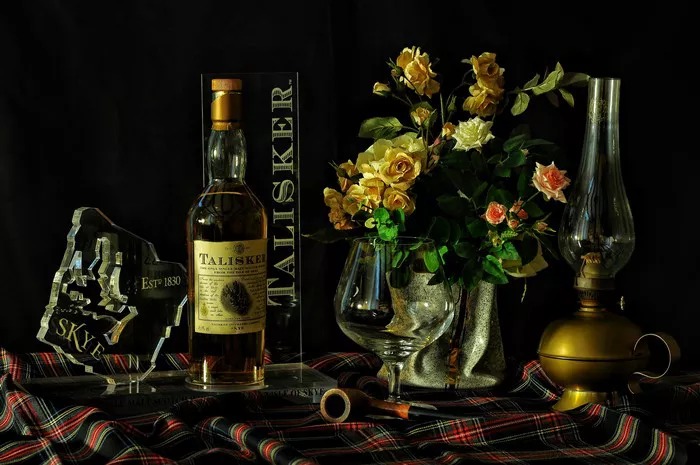Absinthe liquor has long held a mystique and allure, often associated with bohemian artists and tales of hallucinations. But what exactly is Absinthe liquor? In this comprehensive guide, we will delve into the world of Absinthe, uncovering its origins, ingredients, preparation methods, and its role in modern mixology. By the end of this article, you’ll have a clear understanding of this enigmatic spirit and its place in the world of alcoholic beverages.
1. The History of Absinthe
Origins: Absinthe, also known as the “Green Fairy,” has its roots in Switzerland in the late 18th century. It was initially created as a medicinal elixir, combining herbs like wormwood, anise, and fennel.
The Belle Époque: Absinthe gained immense popularity during the 19th century, particularly in France. It became the drink of choice for artists and writers, including Vincent van Gogh and Oscar Wilde.
Bans and Revival: Due to concerns about its alleged hallucinogenic properties, Absinthe was banned in several countries in the early 20th century. However, it experienced a revival in the late 20th century as these myths were debunked.
2. Ingredients of Absinthe
Wormwood: Wormwood (Artemisia absinthium) is the key ingredient in Absinthe, giving it its distinctive bitter flavor. It also contains thujone, a compound once thought to be hallucinogenic but now considered safe in moderation.
Anise and Fennel: These two herbs contribute to Absinthe’s licorice-like aroma and flavor, balancing the bitterness of wormwood.
Neutral Alcohol: High-proof neutral alcohol serves as the base for Absinthe, and it’s infused with the botanicals mentioned above.
3. The Art of Absinthe Preparation
Traditional Absinthe Louche: To prepare Absinthe traditionally, you’ll need a special glass and spoon. A sugar cube is placed on the spoon, and cold water is dripped over it into the Absinthe. This causes the drink to “louche” or turn cloudy as essential oils are released, enhancing the flavors.
Modern Variations: Contemporary bartenders have adapted Absinthe preparation methods, often creating elaborate rituals that involve fire and special absinthe fountains.
4. Absinthe in Contemporary Culture
Mixology: Absinthe has found its place in modern mixology, with bartenders incorporating it into cocktails like the “Sazerac” and the “Corpse Reviver #2.”
Legality: Absinthe is now legal in most countries, with strict regulations regarding thujone content. It is essential to purchase Absinthe from reputable producers.
Cultural References: Absinthe continues to be a subject of fascination in literature, art, and film, cementing its status as an iconic spirit.
5. Responsible Consumption and Health Considerations
Moderation: As with any alcoholic beverage, moderation is key when enjoying Absinthe. It typically has a high alcohol content, so it’s important to consume it responsibly.
Health Effects: Contrary to the myths of the past, Absinthe does not cause hallucinations. However, excessive consumption can lead to alcohol-related health issues.
Conclusion
In conclusion, Absinthe liquor is a fascinating spirit with a rich history, distinctive ingredients, and unique preparation methods. While it was once shrouded in controversy, modern understanding has debunked many of the myths surrounding its consumption. Today, Absinthe continues to captivate enthusiasts and mixologists alike, offering a taste of history and a glimpse into the world of the Green Fairy. When enjoyed responsibly, it can be a delightful addition to your cocktail repertoire, providing a sensory experience like no other.
FAQs about Absinthe liquor:
Q1: Is Absinthe illegal in the United States?
A1: No, Absinthe is not illegal in the United States. The ban on Absinthe was lifted in 2007, allowing its sale and consumption. However, it must adhere to strict regulations regarding thujone content.
Q2: Does Absinthe really make you hallucinate?
A2: No, Absinthe does not make you hallucinate. The myth of Absinthe causing hallucinations was largely based on misconceptions about the compound thujone. Modern Absinthes contain minimal thujone levels, not enough to cause hallucinations.
Q3: What is the traditional Absinthe preparation process?
A3: Traditional Absinthe preparation involves placing a sugar cube on a specially designed spoon, which is then placed over a glass of Absinthe. Cold water is slowly dripped onto the sugar cube, causing the Absinthe to louche (turn cloudy) as essential oils are released, enhancing the flavor.
Q4: Can you drink Absinthe straight, or is it meant for mixing in cocktails?
A4: Absinthe can be enjoyed both straight and in cocktails. It has a unique and strong flavor, so some people prefer to dilute it with water or use it as an ingredient in cocktails like the “Sazerac” or “Death in the Afternoon.”
Q5: What is the significance of the “Green Fairy” nickname for Absinthe?
A5: The nickname “Green Fairy” is a reference to Absinthe’s emerald-green color when prepared traditionally. It’s also associated with the idea that Absinthe could inspire creativity and artistic visions, much like a fairy.
Q6: Is Absinthe more alcoholic than other spirits?
A6: Absinthe typically has a higher alcohol by volume (ABV) content, often ranging from 45% to 74%. This makes it stronger than many other spirits, so it should be consumed in moderation.
Q7: Are there any health risks associated with drinking Absinthe?
A7: Like any alcoholic beverage, excessive consumption of Absinthe can lead to health risks such as addiction, liver damage, and impaired judgment. It’s essential to enjoy Absinthe responsibly and in moderation.
Q8: Where can I buy authentic Absinthe?
A8: Authentic Absinthe can be purchased from reputable liquor stores or online retailers. Look for Absinthes that adhere to regulations regarding thujone content and quality production standards.
Q9: Can I make my own Absinthe at home?
A9: Making Absinthe at home can be challenging and potentially dangerous, as it involves botanicals like wormwood. It’s recommended to leave the distillation and production of Absinthe to professionals.
Q10: What are some famous literary or artistic references to Absinthe?
A10: Absinthe has been referenced in the works of famous artists and writers, including Vincent van Gogh, Pablo Picasso, and Oscar Wilde. It often symbolizes creativity and the bohemian lifestyle in literature and art.


